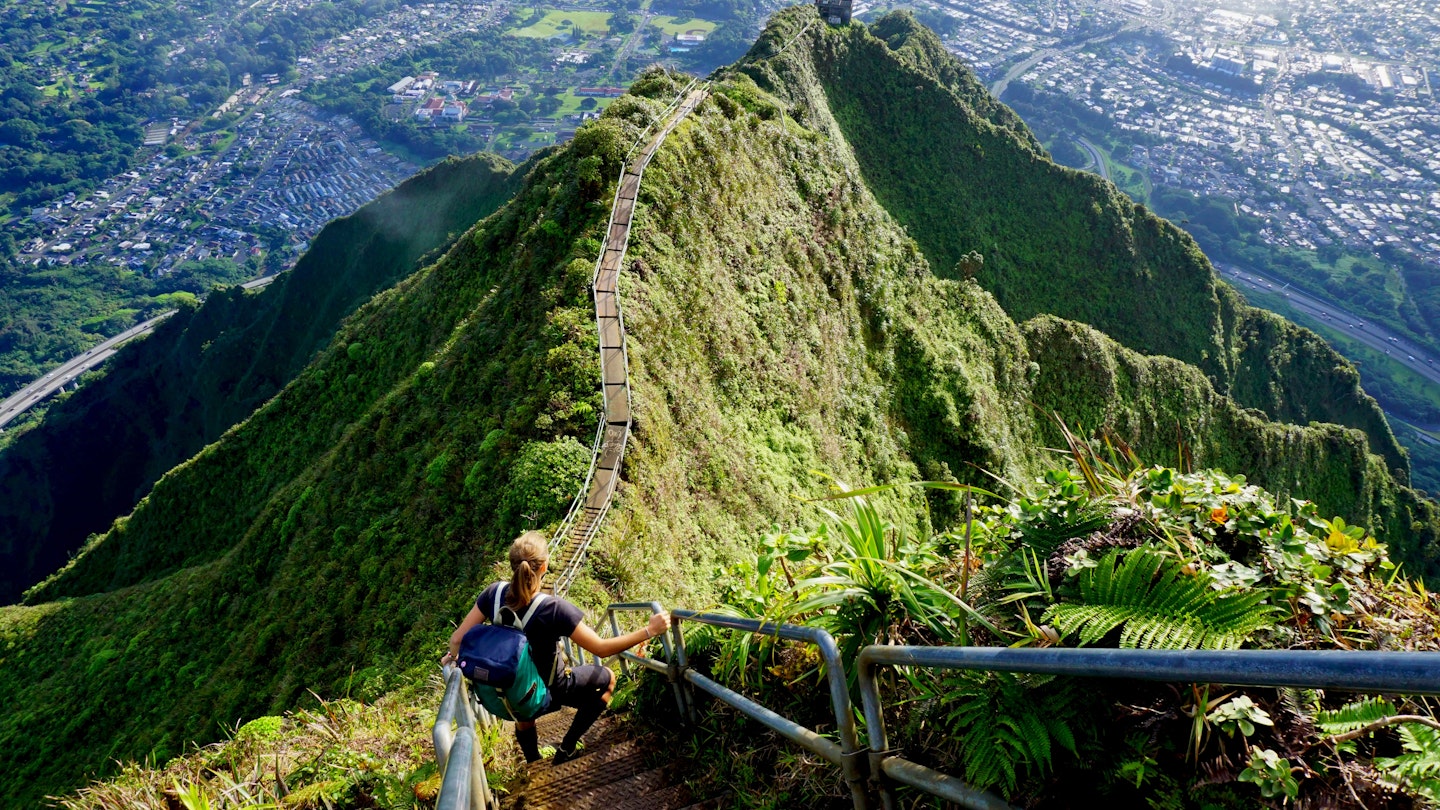The Haiku Stairs: A Controversial Tourist Attraction in O’ahu
Recently, the Honolulu City Council made the decision to remove the Haiku Stairs, popularly referred to as the “Stairway to Heaven.” Originally constructed by the US Navy in the 1940s to serve a radio station, these stairs have evolved into an unofficial tourist destination that attracts thousands of adventure seekers annually. However, it is crucial to note that these visitors often trespass on private residential property to ascend the 3,000-plus stairs that run along the Koolau Mountains.
Historical Context
The Haiku Stairs were formally closed in 1987, yet the allure of the hike has drawn many individuals to the site. Consequently, local residents have voiced concerns regarding the increasing number of trespassers, which has surged in recent years, largely due to the influence of social media platforms. Despite the existence of a potential $1,000 fine for trespassing, the influx of visitors shows no signs of slowing down.

Public Safety Concerns
On Tuesday, Honolulu Mayor Rick Blangiardi made an official announcement regarding the stairs’ removal, emphasizing the importance of public safety and the lack of infrastructure to accommodate visitors. He acknowledged the interest from certain community groups but noted that critical issues such as trespassing, personal injuries, invasive species, and overall public safety must take precedence.
Mayor Blangiardi stated, “Fundamentally, it is inappropriate to have a high-use tourist attraction entering through this residential neighborhood, which lacks the capacity to provide appropriate facilities or parking.” This underscores the broader implications concerning visitor management in sensitive residential areas.
Local Sentiments and Future Perspectives
Conversely, proponents for preserving the Haiku Stairs argue that this hiking trail is a vital component of the local landscape. In an editorial featured in the Honolulu Star-Advertiser, Charles Burrows articulated that dismantling the stairs would be similar to closing access to local beaches. He asked rhetorically if closing popular beach parks like Sandy Beach or Hanauma Bay due to liability concerns would be acceptable.
The contentious debate surrounding the Haiku Stairs has persisted for several decades. Following World War II, management of the radio station transitioned from the Navy to the Coast Guard. During the 1970s, hikers were allowed access with a signed waiver from the Coast Guard. However, with the increasing popularity of the trail came issues of littering, vandalism, and rising trespasser numbers, culminating in a permanent access restriction by the Coast Guard in 1987.
Over the years, numerous local organizations, including the Friends of Haiku Stairs and the Kaneohe Neighborhood Board, attempted to establish a managed access plan, yet these efforts failed to materialize. In 2002, nearly $1 million was allocated for repairs with hopes of reopening the stairs, but following a tragic accident at Sacred Falls, where nine hikers lost their lives, the reopening plan was abandoned.
As Hawaii continues to navigate the challenges posed by tourism and its recovery from the pandemic, discussions about the Haiku Stairs exemplify broader considerations about sustainable tourism practices and public access to natural resources.




